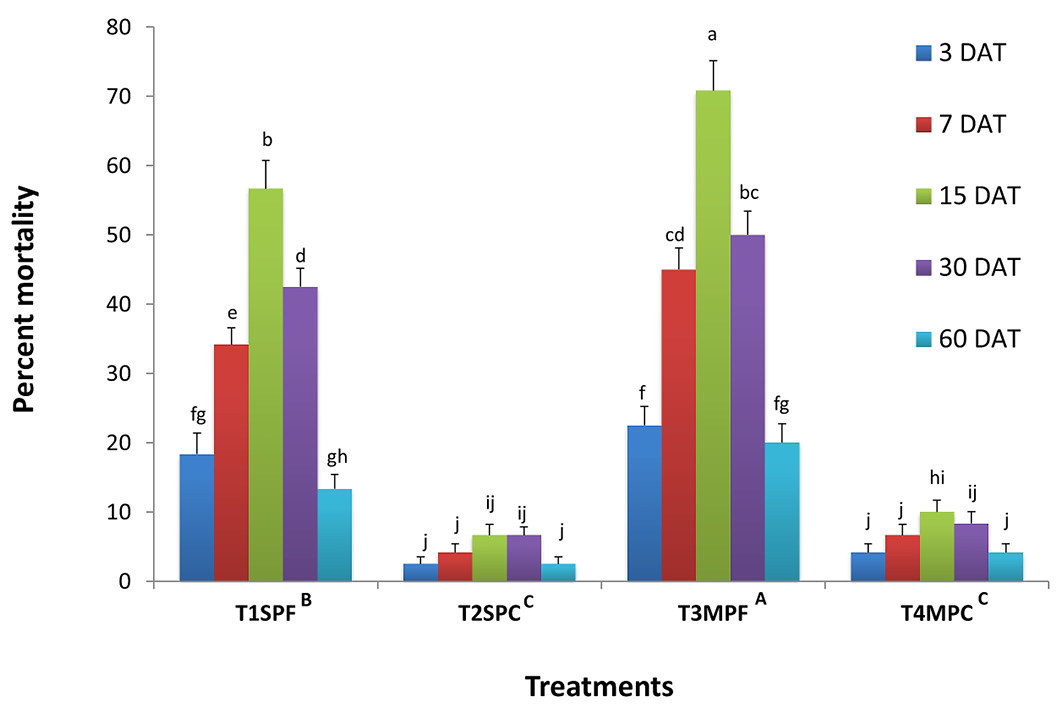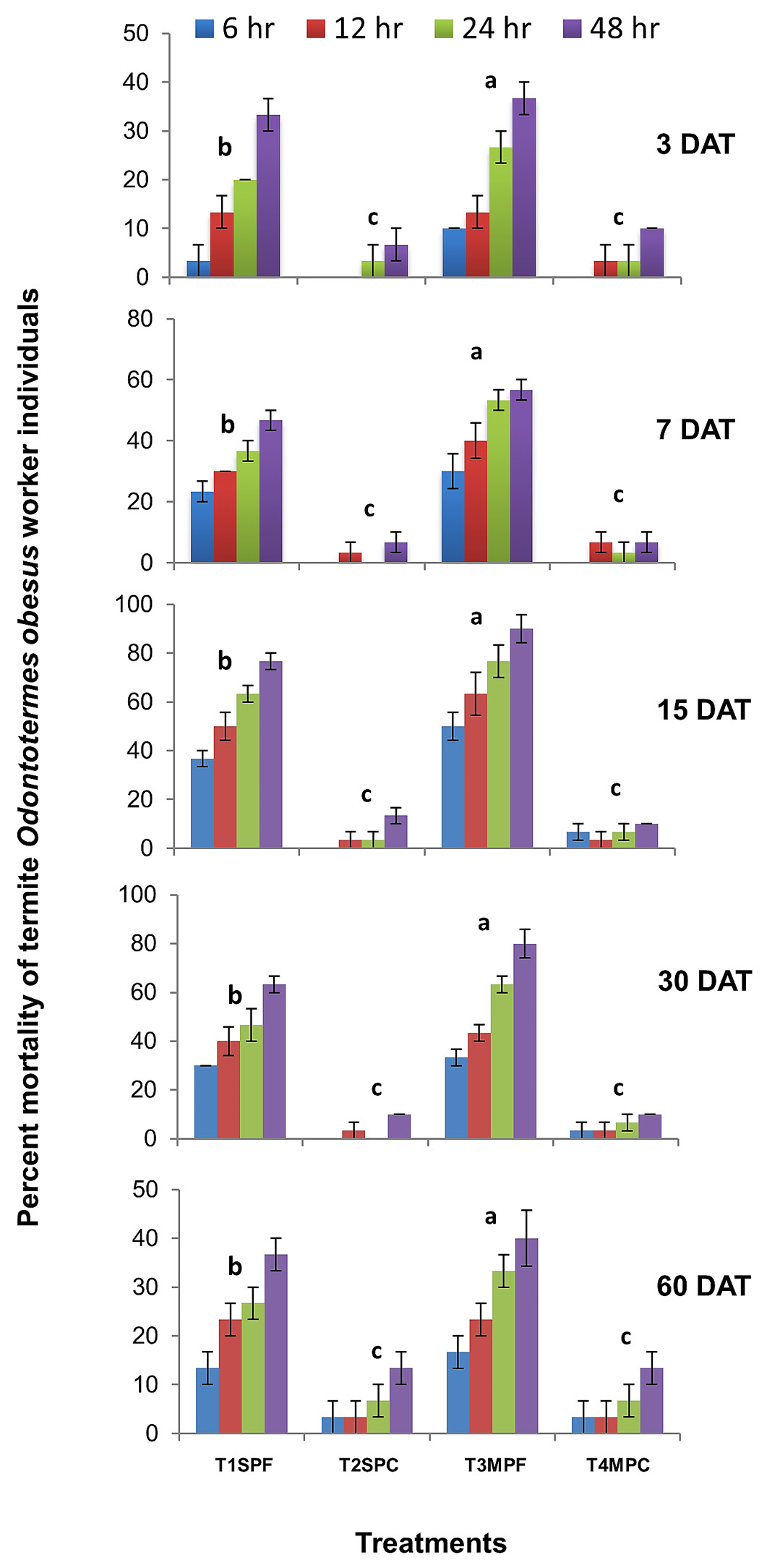Development and Laboratory Evaluation of a Slow Release Formulation of Fipronil against Subterranean Termites (Odontotermes obesus Rambur)
Sajid Amin Sarmad1, Muhammad Zeeshan Majeed1*, Muhammad Luqman1, Muhammad Asam Riaz1, Sohail Ahmed3 and Sylvain Nafiba Ouédraogo2
Percent mortality (mean ± SE; sample size n = 16) of worker individuals of subterranean termite Odontotermes obesus in response to different treatments recorded at different post-exposure time intervals. Treatments included different formulated pellets containing sugarcane bagasse powder with (T1SPF) and without (T2SPC) fipronil, and maize cob powder with (T3MPF) and without (T4MPC) fipronil. Different lettersindicate the significant difference among treatments (factorial (two factor) one-way ANOVA at α = 0.05).
Percent mortality (mean ± SE; sample size n = 4) of worker individuals of subterranean termite Odontotermes obesus in response to different treatments recorded at different post-exposure time intervals. Treatments included different formulated pellets containing sugarcane bagasse powder with (T1SPF) and without (T2SPC) fipronil, and maize cob powder with (T3MPF) and without (T4MPC) fipronil. Different letters indicate the significant difference among treatments (factorial (two factor) one-way ANOVA at α = 0.05). DAT: days after treatment.









